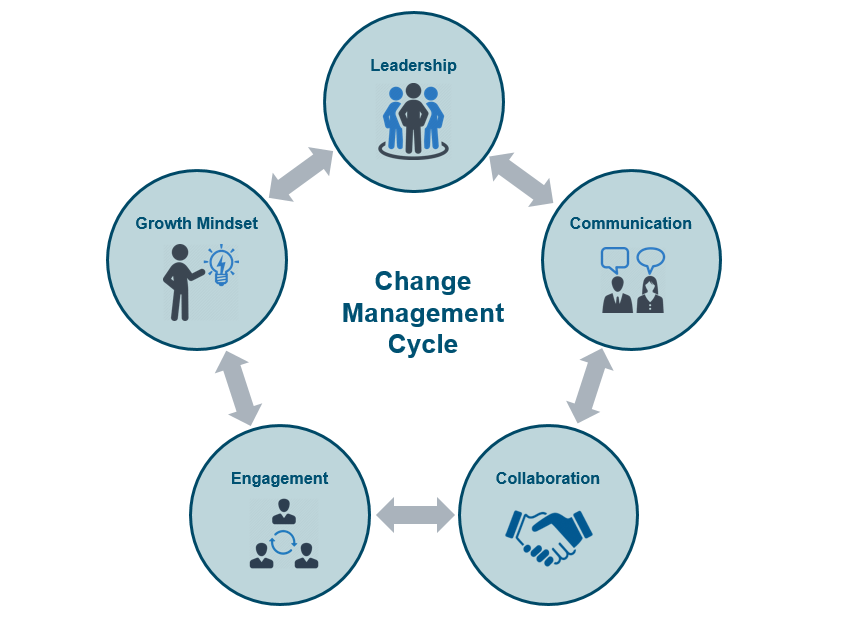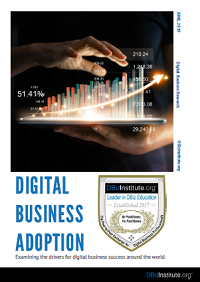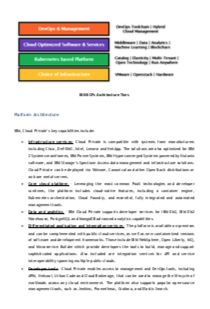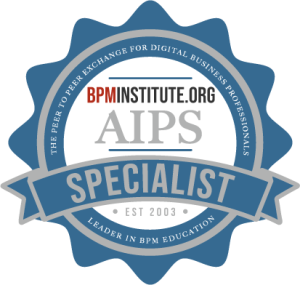Home / Resources
Resources
Discover a Wealth of BPM Knowledge and Expertise at BPMInstitute.org!

The Road to IoT Success Runs through Digital Process Automation (DPA)
Editors Note: DBizInstitute is excited to share this article, written by Dr. Setrag Khoshafian, with our community and in advance of his new book release. Keep an eye on our website as we share additional articles in the coming months written by Setrag, as well as a pending Meet the Author webcast to discuss his new book ‘How to Alleviate Digital Transformation Debt’ expected to air Fall 2021. Be sure to pre-register! This article was originally published on CognitiveWorld on December 19, 2019.

Digital Transformation of Supply Chain through IoT, Analytics, and Automation
Editors Note: DBizInstitute is excited to share this article, written by Dr. Setrag Khoshafian, with our community and in advance of his new book release. Keep an eye on our website as we share additional articles in the coming months written by Setrag, as well as a pending Meet the Author webcast to discuss his new book ‘How to Alleviate Digital Transformation Debt’ expected to air Fall 2021. This article was originally published on CognitiveWorld.com on December 17, 2019.

Blockchain to Valuechain
Editors Note: DBizInstitute is excited to share this article, written by Dr. Setrag Khoshafian, with our community and in advance of his new book release. Keep an eye on our website as we share additional articles in the coming months written by Setrag, as well as a pending Meet the Author webcast to discuss his new book ‘How to Alleviate Digital Transformation Debt’ expected to air Fall 2021. This article was originally published on CognitiveWorld.com on December 2, 2019.
The decentralized ledger technology (DLT) underlying cryptocurrencies – Blockchain – is becoming a defacto solution for many peer-to-peer applications.

Taming Entropy: From Waterwheels to Robotic Process Automation (RPA)
In one of my earlier articles on Disruption, Innovation and the Art of Business Architecture, I made the case that the concept of entropy is highly applicable in explaining the evolution of business organizations.
Generally speaking, entropy is the measure of disorder in a closed system, and it is a concept borrowed from thermodynamics – the branch of physics that deals with the relationship between heat, work, temperature, and energy in a system.

Scaling & Sustaining Your Digital Process Automation Program – Notes from the Field
We are a year and a half into our Digital Process Automation program and have had some very strong successes as we learn new tool sets, build our enterprise capability center for governance and stand up an Agile way of working. Year one (1) we delivered over $10M in returned value on an investment of $3M. That early success buoyed our enthusiasm and optimism. It also pushed us to strive for bigger and better successes for year two (2).
We knew maturing, scaling and sustaining the new capability was going to be our focus for year two (2). However, that early optimism had us more bullish than perhaps we should have been. We were a bit stymied on the slowing of momentum as new and different challenges presented themselves.
Here are some field notes of our journey to date. This year, as we endeavor to drive forward and unlock business value using RPA/RDA capabilities, coupled with AI for Intelligent Automation, we have stepped back to assess, adjust, and learn.

3 Key Mindset Shifts to Make Your Agile Transition Successful
When transitioning to agile, the key is to shift your thinking. Here are three critical areas that you should consciously work on changing.

The Power of Stakeholder Analysis
Whether I am working on a single process or an operating model, I have found that stakeholder analysis is a good place to start. It is simple to do and often gives insights that are valuable both to the design work and to the transformation work.
Take a page of paper or a flip chart, describe the thing you are designing (process or function or whole organisation) in a circle in the middle, and array the stakeholders on spokes leading away from this central circle. A stakeholder is an individual or group of individuals or organisations who are likely to be affected by the work you are doing or whose requirements will affect the work you are doing.

Ramping Up Skills for Digital
EDITOR’S NOTE: DBizInstitute.org has released it first research report “Digital Business Adoption: Examining the drivers for digital business success around the world”. Access this members-only report by logging in (existing members) or join DBizInstitute.org today.

Digital Business Adoption Research Report
The Digital Business Adoption Report, a members-only research report, represents the first survey by DBizInstitute.org and as such will form the baseline for future research in this area. The objective was to examine who and what is driving Digital Business Adoption as well as the expected benefits, enabling technologies and required skills for practitioners around the world.
Login or join today to get your copy. In the twelve-page report you will learn:
- Who is Driving Digital
- What is Driving Digital
- What are the Prerequisites
- Fundamentals for Digital
- Skills for Digital
- Skills Gap
Respondents from USA, Canada, Europe, Asia and Middle East provide a global flavor to the survey.

What is Good Enough Agile Documentation?:The minimum requirements for every Agile project
There is a recurring myth in the IT industry that Agile projects do not require documentation, that giving stakeholders the opportunity to respond to fully functional software replaces that need altogether. This perception (or, more accurately, this misperception) often stems from a misunderstanding of the following statement in the Agile Manifesto (https://agilemanifesto.org):
” We have come to value…. Working software over comprehensive documentation”
The creators of the Agile Manifesto have clarified this statement numerous times, emphasizing the following qualifying condition at the end:
“That is, while there is value in the items on the right, we value the items on the left more.”

Creating Agility and Operational Efficiency with Decision Modeling
Decision modeling is designed to bridge the gap between business processes and the key decision-making technologies needed to transform traditional processes with digital decisioning, which typically includes both business rules management systems (BRMS) and predictive analytics. Here we’re using the term “predictive analytics” in its broadest sense, including artificial intelligence and machine learning technologies.
Decision modeling delivers the agility and operational efficiency required for a real-time customer experience while assuring the highest levels of consistency, compliance and risk management.
Why Model Decisions?

Top 5 Digital Trends for 2019
2019 is going to be a very different year than the past few years. 2017 was a “pedal to the metal” year where almost all were making forward momentum with digital. 2018 started strong, but there was a shift to “steady speed” over acceleration. Many economic experts are now predicting a slight dip in growth which means businesses will be hovering their foot above the brake pedal just in case the turmoil in the markets takes a sharp turn. What does this mean for business investment in Digital? This blog will be my best shot at predicting the likely trends.

IBM Cloud Private: A Private Cloud Story

Future-Proofing: 3 Methods for Creating Business Value
In a previous article, Using Business Architecture to Design Future Industries, I made the case that Business Architects have an important role to play in identifying future-oriented business opportunities in emerging business sectors such as the $350B space industry. The example provided was that of a key business process – the space supply chain management process – which is already being defined and modeled by several organizations. While the space industry and its key sector – space transportation – are still in their infancy, industry players with the foresight to map out the long-term business and IT architecture for the space transportation infrastructure will have first-entrant advantage into what is expected to be a highly lucrative field.

Where to Start with Process Improvement in a New Organization
Most of us have found ourselves in the situation where we are assigned to oversee a function or department new to us. Without knowing what we’ve inherited, the honeymoon period kicks off – those critical ninety or so days where we have to demonstrate that the hiring manager made the right decision. During this time, we meet with our direct reports, talk with customers, watch how things are getting done, and diligently investigate areas identified by our boss. But true progress is somewhat elusive – we just don’t really know where to dig in. Not knowing where to focus their energy, many new managers hammer down on the administrative side of the job. Unfortunately, they quickly lose the ability to see with fresh eyes the reality of the situation. They get sucked into the void of the status quo.

5S-Work Flow Management in Enterprise Excellence Deployment
As Part of a Business Transformation and Enterprise Excellence strategy, how can the methodologies & tools of Operational Excellence be integrated into Business Strategy?

The Role of Operations in Strategy
I recently enjoyed an article by Kevin Laczkowski and colleagues at McKinsey titled: Seeing your way to better strategy. It argued for four lenses to help you “see your way” forward – Financial, Market, Competitor and Operating Model. The thought behind these lenses is that, by doing some focused thinking around each lens, you will develop better strategy.

Robotic Process Automation within your Organization
Whether you are into BPM on a full-time basis or a general technologist, it is hard to not be seriously considering RPA or RDA (Robotic Desktop Automation) in the mix of any business solution you are working on lately. For Pegasystems specialist, you may have been introduced to RPA by their fairly recent acquisition of OpenSpan (now Pega Robotics). Pegasystems is rapidly assimilating the RPA into their BPM platform (PRPC 7.4). Although, integration with BPM is a good feature, in the industry RPA is platform agnostic and considered a platform in and of itself.
I have seen some organizations establish entire reporting units dedicated to RPA, even with a well-established BPM practice already in place. In discussions with technology leads, some seem to have a hard time enunciating how RPA fits into the overall architecture, this will be mitigated once there are enough RPA implementations and associated case studies disseminated.

Stop Trying to Be Agile: Agile is a process, not a goal
Agile has become an industry buzzword, a marketing term that organizations use to try to show that they are responsive to their clients and adaptive to industry changes. In fact, the perception of being an Agile organization has such strong market value that claiming to be Agile often becomes the objective unto itself. If the goal of your organization is to say that you are Agile, then you may be missing the point.
Trying to be an Agile organization is like trying to be a happy person. You do not achieve Agility (or happiness) by making it your primary objective; you achieve it by making constructive changes and taking positive actions that get you there.

The Experience-Driven Business Architect: Lessons from the Field
Some design is just bad. Doors that you can’t tell if they push or pull to open, microwave oven buttons, the Ford Pinto, the list goes on and on. Bad design is easy to spot and often easy to fix, but some design is really good and still fails…why??? Many companies have learned that that having the best products isn’t enough; today it is all about the end-to-end experience. Delivering exceptional experiences should become the mantra of business architects everywhere and the best way to do this is to partner with a group already skilled at doing this: User Experience (UX) designers. In this installment of Lessons from the Field, I would like to demonstrate how business architects, working closely with UX designers, can help deliver exceptional experiences.
Exceptional Experiences
So, what makes an experience exceptional? This of course varies from person to person, but here are some common examples:













